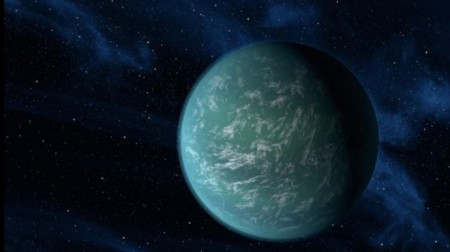
Called Kepler-22b, the planet is about 2.4 times the radius of Earth and about 600 light-years away. And it orbits in the “habitable zone,” the region of space just far enough from a star that liquid water could exist on the planet’s surface — a discovery could have profound implications in the quest for alien life, said Alan Boss, an astrophysicist with Carnegie Melon University.
“This discovery supports the growing belief that we live in a universe crowded with life,” Boss said. “Kepler is on the verge of determining the actual abundance of habitable, Earth-like planets in our galaxy.”
The host star lies about 600 light-years away from us (1 light year is about 6 trillion miles) toward the constellations of Lyra and Cygnus, the researchers said, and is about 25 percent less luminous than the Sun. Kepler-22b orbits the star every 290 days, as compared with 365 days for the Earth, at a distance about 15 percent closer to its star than the Earth from the Sun — close enough to suggest a pleasing, balmy temperature on the surface.
Such a temperature means liquid water could exist on the surface of the planet, something necessary for life as we know it — and this new planet might well be not only habitable but perhaps even inhabited.
“This is a major milestone on the road to finding Earth’s twin,” said Douglas Hudgins, Kepler program scientist at NASA Headquarters in Washington. “Kepler’s results continue to demonstrate the importance of NASA’s science missions, which aim to answer some of the biggest questions about our place in the universe.”
Interestingly, Kepler-22b was not photograph so much as implied. The discovery team, led by William Borucki of the NASA Ames Research Center, pored over photometric data from the NASA Kepler space telescope. They watched for tiny dimmings of star light — dimmings that can only be measured by a highly specialized space telescope like Kepler — which indicate that an Earth-size planet is transiting between us and a star.
Kepler requires at least three transits to verify a signal as a planet.
“Fortune smiled upon us with the detection of this planet,” explained William Borucki, Kepler principal investigator at NASA Ames Research Center at Moffett Field, Calif., who led the team that discovered Kepler-22b.”
Of the 54 habitable zone planet candidates reported in February 2011, Kepler-22b is the first to be confirmed.
The milestone will be published in an upcoming article in The Astrophysical
